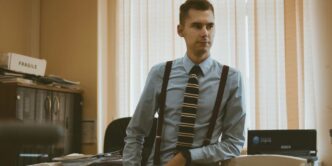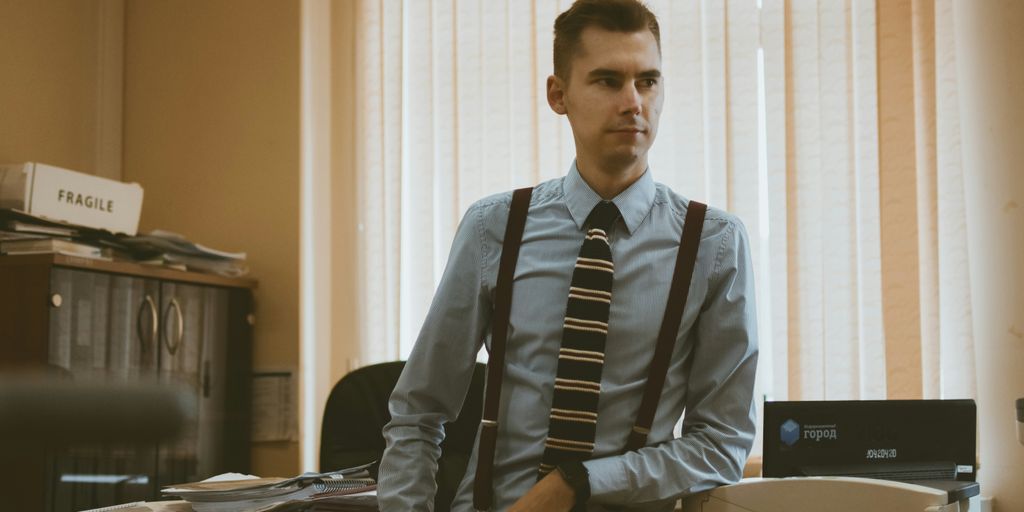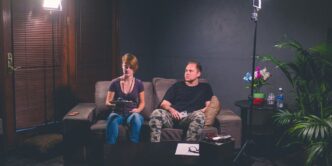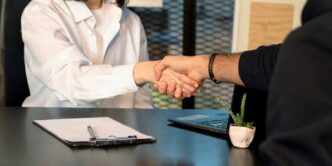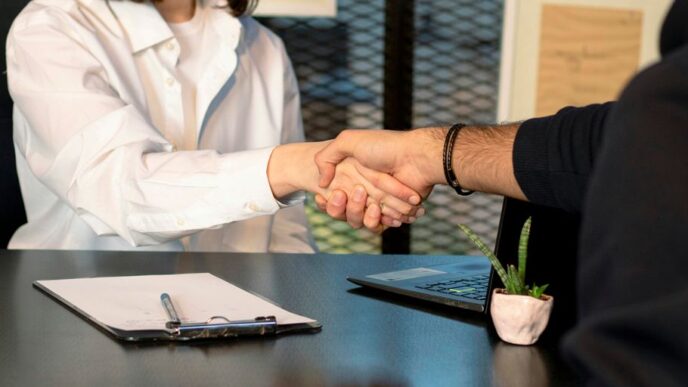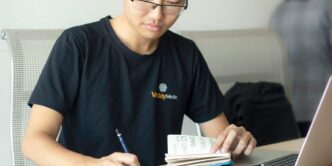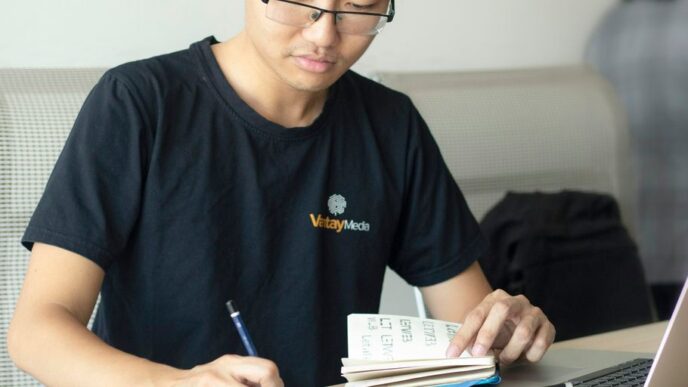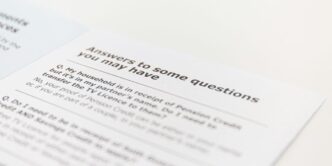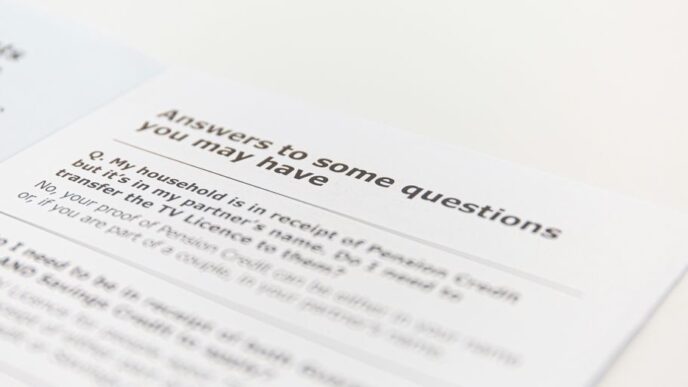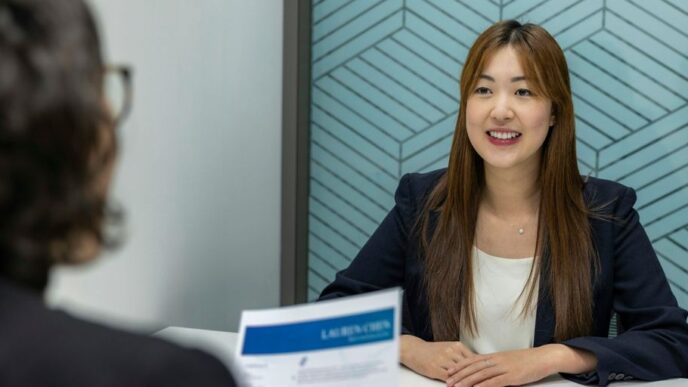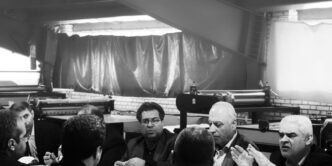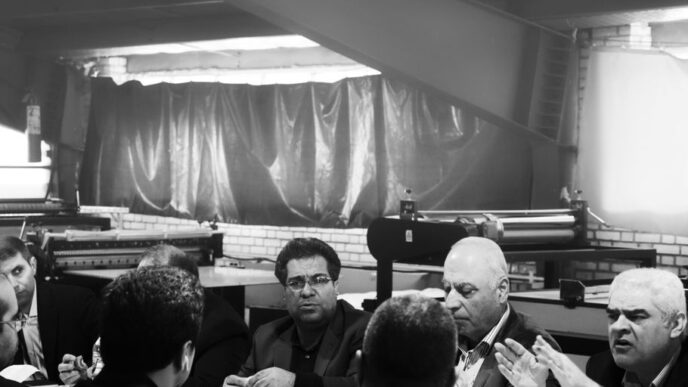So, you’ve got a job interview coming up. Awesome! But then you start thinking, what am I going to wear? It’s a common question, and honestly, what you wear to a job interview outfits matters a lot. It’s not just about looking good; it’s about showing you’re serious and ready for the job. This guide will walk you through picking the right job interview outfits so you can feel good and make a strong first impression.
Key Takeaways
- Always aim for professional clothing that fits well and is clean.
- Research the company’s dress code to pick the right job interview outfits.
- For men, a suit is usually a safe bet; for women, professional dresses or separates work well.
- Keep accessories simple and not distracting.
- Prepare your job interview outfits the day before to avoid last-minute stress.
General Principles Of Interview Attire
When prepping for a job interview, it’s easy to focus solely on your resume and answers to common questions. But what you wear matters, maybe even more than you think! Your interview attire is a silent communicator, conveying professionalism and respect before you even utter a word. Let’s break down some key principles to ensure you’re sending the right message.
Professionalism And Dress Code Compliance
First and foremost, aim for professional clothing. This doesn’t always mean a full suit, but it always means dressing appropriately for the role and company. Research the company culture beforehand. Is it a formal environment, or more relaxed? If you’re unsure, it’s generally better to err on the side of caution and dress slightly more formally. Make sure your clothes are clean, ironed, and in good condition – no stains, tears, or excessive wrinkles allowed!
Making A Strong First Impression
They say you never get a second chance to make a first impression, and that’s especially true in job interviews. Your appearance is a key part of that first impression. It shows that you take the interview seriously and that you respect the interviewer’s time. Think of your outfit as a visual resume – it should highlight your attention to detail and your understanding of professional norms. A polished look can instantly boost your credibility and make you appear more confident and competent.
Boosting Your Confidence
What you wear can significantly impact how you feel. When you know you look good, you feel good, and that confidence shines through in your interview. Choose an outfit that makes you feel comfortable and empowered. If you’re constantly fidgeting or adjusting your clothes, it will distract you and the interviewer. Select something that fits well, allows you to move freely, and reflects your personal style while still maintaining a professional appearance. When you feel confident in your attire, you can focus on showcasing your skills and experience, rather than worrying about how you look.
Job Interview Outfits For Men
Okay, guys, let’s talk about what to wear to nail that interview. It’s not just about skills; it’s about showing you care and fit in. First impressions matter, and your outfit speaks volumes before you even open your mouth. So, let’s break down some solid options.
Suits And Shirts
A well-fitted suit is your safest bet for most interviews. Seriously, you can’t go wrong with it. Make sure it’s clean, pressed, and fits you well – not too tight, not too baggy. Think classic colors like navy, gray, or even a subtle charcoal. As for shirts, stick to button-downs in white or light blue. Avoid anything too flashy or patterned. You want the focus to be on you, not your clothes. I remember this one time I wore a wrinkled shirt to an interview, and I could tell the interviewer was distracted. Never again!
Ties And Shoes
Your tie is where you can add a little personality, but don’t go overboard. Choose a tie that complements your suit and shirt without being too distracting. Subtle patterns and classic colors are ideal. And please, make sure it’s tied correctly! As for shoes, your dress shoes should be polished and match your belt. Avoid sneakers or casual footwear. A good pair of dress shoes can really elevate your look.
Minimal Accessories
Keep accessories minimal. A classic watch and a simple belt are sufficient. Avoid anything that might distract the interviewer. No flashy jewelry or anything too attention-grabbing. The goal is to look professional and put-together, not like you’re trying too hard. I usually just stick to my watch and a simple belt. Less is definitely more in this case.
Job Interview Outfits For Women
Professional Dress Options
Women have a ton of choices when it comes to interview outfits, which can be both a blessing and a curse! The key is to project competence and professionalism while still feeling like yourself. A classic sheath dress in a neutral color like navy, gray, or black is always a safe bet. You could also consider a well-fitting pantsuit. The goal is to choose something that makes you feel confident and ready to tackle any question they throw your way. Think about the message your clothes are sending. Are they saying "I’m serious about this job"? Or are they saying "I rolled out of bed and grabbed the first thing I saw"?
Blazers And Skirts
A blazer can instantly elevate any outfit, making it interview-ready. Pair a blazer with a skirt (knee-length or slightly below) for a polished look. A pencil skirt is a classic choice, but A-line skirts can also work well. Just make sure the skirt isn’t too tight or too short. Comfort is key, because you don’t want to be fidgeting during the interview. Here’s a quick guide:
- Blazer Colors: Navy, black, gray
- Skirt Styles: Pencil, A-line
- Skirt Length: Knee-length or slightly below
Subtle Accessories
When it comes to accessories, less is definitely more. A simple necklace, a pair of stud earrings, and a classic watch are all you need. Avoid anything too flashy or distracting. You want the interviewer to focus on what you’re saying, not on your jewelry. A professional bag website to enhance online presence is also a must. Make sure it’s clean and organized, and that it can hold your resume and any other important documents. Here are some things to avoid:
- Large, dangling earrings
- Multiple rings
- Brightly colored scarves
Industry-Specific Attire Considerations

It’s not one-size-fits-all when it comes to interview outfits. What you wear can really depend on the industry. Let’s break down some common fields and what’s generally expected.
Business And Finance Formal Attire
For business and finance, think classic and conservative. A full suit is usually the way to go. We’re talking dark colors – navy, gray, or black. A crisp white shirt is a safe bet. Don’t forget polished shoes and a professional tie for men. For women, a tailored pantsuit or skirt suit works well. Keep accessories minimal and professional. You want to project competence and attention to detail. It’s always better to be overdressed than underdressed in this sector. You can find more information about formal business attire online.
Creative Industries Business Casual
Creative fields offer a bit more leeway. Business casual is often the sweet spot. Think about showing your personality while still looking professional. For men, this could mean chinos or dress pants with a button-down shirt or a stylish sweater. A blazer can add a touch of sophistication. For women, a blouse with a skirt or dress pants is a good option. You can play with colors and patterns a bit more, but avoid anything too loud or distracting. The goal is to show you have an eye for style while still being professional. Accessorize thoughtfully – a unique scarf or piece of jewelry can work well.
Tech And Startups Relaxed Professional
Tech and startup environments often have a more relaxed vibe. However, that doesn’t mean you can roll in wearing just anything. Aim for a "relaxed professional" look. Dark-wash jeans might be acceptable in some cases, but always err on the side of caution. A button-down shirt or a nice polo shirt is a good choice. A blazer or cardigan can add a layer of polish. For women, comfortable but stylish separates work well. Think about what you might wear on a typical day at the office, and then elevate it slightly for the interview. Cleanliness and good grooming are key, even if the dress code is casual. It’s important to show you understand the company culture while still presenting yourself as a serious candidate.
Healthcare And Education Practical Professional
In healthcare and education, practicality and professionalism are key. You want to look competent and trustworthy. A blazer with slacks or a skirt is a good option for both men and women. Choose comfortable shoes, as you might be doing a lot of walking. Avoid anything too flashy or distracting. Keep jewelry minimal. Think about functionality – can you move easily and comfortably in your outfit? In these fields, your attire should inspire confidence and demonstrate that you’re ready to get to work. It’s important to show respect for the profession and the people you’ll be serving.
Common Interview Attire Mistakes To Avoid
It’s easy to get caught up in the pressure of an interview and make some common clothing errors. Avoiding these mistakes can significantly improve your chances of making a positive impression. Let’s break down what not to wear.
Overly Casual Clothing
Even if the company culture seems relaxed, showing up in jeans, a hoodie, or a t-shirt is generally a bad idea. It can signal a lack of seriousness about the opportunity. Think about it this way: you’re selling yourself, and the product needs to look its best. I remember one time I saw a guy show up to an interview in sweatpants. Seriously! It doesn’t matter how great your skills are; that first impression is hard to shake. Instead, aim for business casual or professional attire to show you’re taking the interview seriously.
Distracting Accessories
Keep the bling to a minimum. Huge earrings, flashy necklaces, or noisy bracelets can divert the interviewer’s attention. The goal is for them to focus on you and your qualifications, not your jewelry. I’m not saying you can’t express yourself, but an interview isn’t the time for statement pieces. A simple watch or a pair of understated earrings is usually sufficient. Think subtle and professional. Also, avoid strong perfumes or colognes – some people are sensitive to scents, and you don’t want to cause a distraction or discomfort.
Unprofessional Footwear
Shoes can make or break an outfit. Sneakers, sandals, or overly worn-out shoes are generally not appropriate for an interview. Opt for closed-toe shoes that are clean and in good condition. For men, dress shoes or loafers are a safe bet. For women, pumps, flats, or dress shoes with a low heel are good choices. Make sure your shoes are polished and free of scuffs. I once wore a pair of shoes that I thought were fine, but halfway through the interview, I noticed a huge scratch on the side. Talk about embarrassing!
Last Minute Outfit Preparation
Okay, so the interview is tomorrow (or maybe even gasp later today!). Don’t panic! You can still pull things together and make sure you look presentable and professional. It’s all about being prepared, even at the last minute.
Prepare Your Outfit The Day Before
Ideally, you’d have your outfit sorted out way in advance, but life happens. The day before is your absolute last chance to finalize everything. This means trying on the entire outfit, from head to toe, including shoes and accessories. Check for any stains, tears, or missing buttons. Make sure everything fits comfortably and allows you to move freely. You don’t want to be fidgeting during the interview because your pants are too tight or your shirt is itchy. If something is wrong, you still have time to fix it or find a replacement. It’s also a good idea to have a backup outfit ready, just in case of any unforeseen disasters (coffee spills, wardrobe malfunctions, etc.).
Ensure Cleanliness And Pressing
Wrinkles and stains are a big no-no. Make sure your clothes are clean and pressed. If you don’t have an iron, consider using a steamer or hanging your clothes in the bathroom while you shower – the steam can help to release some of the wrinkles. Pay special attention to your shirt collar, cuffs, and the front of your pants or skirt. Shoes should also be clean and polished. A quick wipe with a damp cloth can make a big difference. Don’t forget to check for lint or pet hair – a lint roller is your best friend in these situations. You want to look like you take pride in your appearance, and that starts with clean, well-maintained clothing. If you need to buy interview appropriate clothing, do it now!
Own Your Chosen Attire
Confidence is key! Even if your outfit isn’t exactly what you envisioned, wear it with pride. Stand tall, make eye contact, and smile. Remember, the interviewers are looking at you as a whole person, not just your clothes. If you feel good in what you’re wearing, it will show. Practice your posture and body language in front of a mirror. Imagine yourself acing the interview and let that positive energy shine through. A confident demeanor can often outweigh minor imperfections in your attire. So, take a deep breath, believe in yourself, and go get that job!
Understanding Company Dress Codes
Researching Company Culture
Okay, so you’ve got an interview lined up – awesome! But before you even think about what to say, you need to figure out what to wear. And that means doing a little digging into the company’s vibe. Start by checking out their website. Look at the "About Us" page, any employee photos, or even their social media. Do people look buttoned-up in suits, or are they rocking jeans and t-shirts? This gives you a clue about their dress code. If you know anyone who works there, even better – ask them directly! It’s way better to be prepared than to show up feeling totally out of place. You can also use sites like EDITED to research the company’s culture.
Dressing A Step Above
Here’s a good rule of thumb: whatever the company’s typical dress code, aim to dress just a little bit nicer for the interview. If it’s a super casual place where everyone wears jeans, maybe opt for chinos or dress pants instead. If it’s business casual, throw on a blazer. You want to show that you’re taking the interview seriously and that you put in the effort. But you also don’t want to look like you’re trying too hard or that you don’t "get" the company culture. It’s a balancing act, but erring on the side of slightly overdressed is usually a safe bet.
Aligning With Organizational Values
Your interview outfit isn’t just about looking presentable; it’s about showing that you understand and respect the company’s values. If the company emphasizes innovation and creativity, you might have a little more leeway to express your personal style. But if it’s a more traditional organization, you’ll want to stick to classic, conservative attire. Think of your outfit as a way of communicating that you’re a good fit for the team and that you’re on board with their mission. It’s all about showing that you’ve done your homework and that you’re ready to make a strong first impression.
Conclusion
So, picking out the right clothes for your interview is a big deal when you’re getting ready. If you follow what we talked about here, you’ll know just what to put on. This helps you look sharp and ready. Remember, what you wear can really help how your job search goes. So, it’s worth it to take your time and pick an outfit that shows you mean business and are good at what you do.
Frequently Asked Questions
What kind of clothes should I wear to a job interview?
For most job interviews, it’s best to wear business formal or business casual clothes. This usually means a suit for men and a suit or professional dress for women. Always try to look neat and put-together.
Are there certain colors I should wear or avoid?
It’s a good idea to pick colors that aren’t too flashy, like navy, gray, or black. These colors look professional and won’t distract the interviewer. You can add a small pop of color with a tie or a scarf if you like.
Should I wear accessories, and if so, what kind?
Yes, accessories should be simple. For men, a watch and a plain belt are usually enough. For women, a few simple pieces of jewelry are fine, but don’t wear anything that jingles or is too big. The goal is to look polished, not flashy.
How important is it for my clothes to be clean and pressed?
Always make sure your clothes are clean, ironed, and fit you well. Wrinkled or dirty clothes can give a bad impression. It’s best to try on your outfit the day before to make sure everything looks good.
How can I figure out what the company’s dress code is?
It’s always a good idea to research the company’s culture. Some places, like creative agencies or tech startups, might have a more relaxed dress code. If you’re not sure, it’s safer to dress a bit more formally than too casually.
What are some common clothing mistakes to avoid during an interview?
The biggest mistakes are wearing clothes that are too casual, like t-shirts or jeans, or outfits that are too revealing. Also, avoid strong perfumes or colognes, and don’t wear too many noisy accessories. Your outfit should help you, not hurt you.

